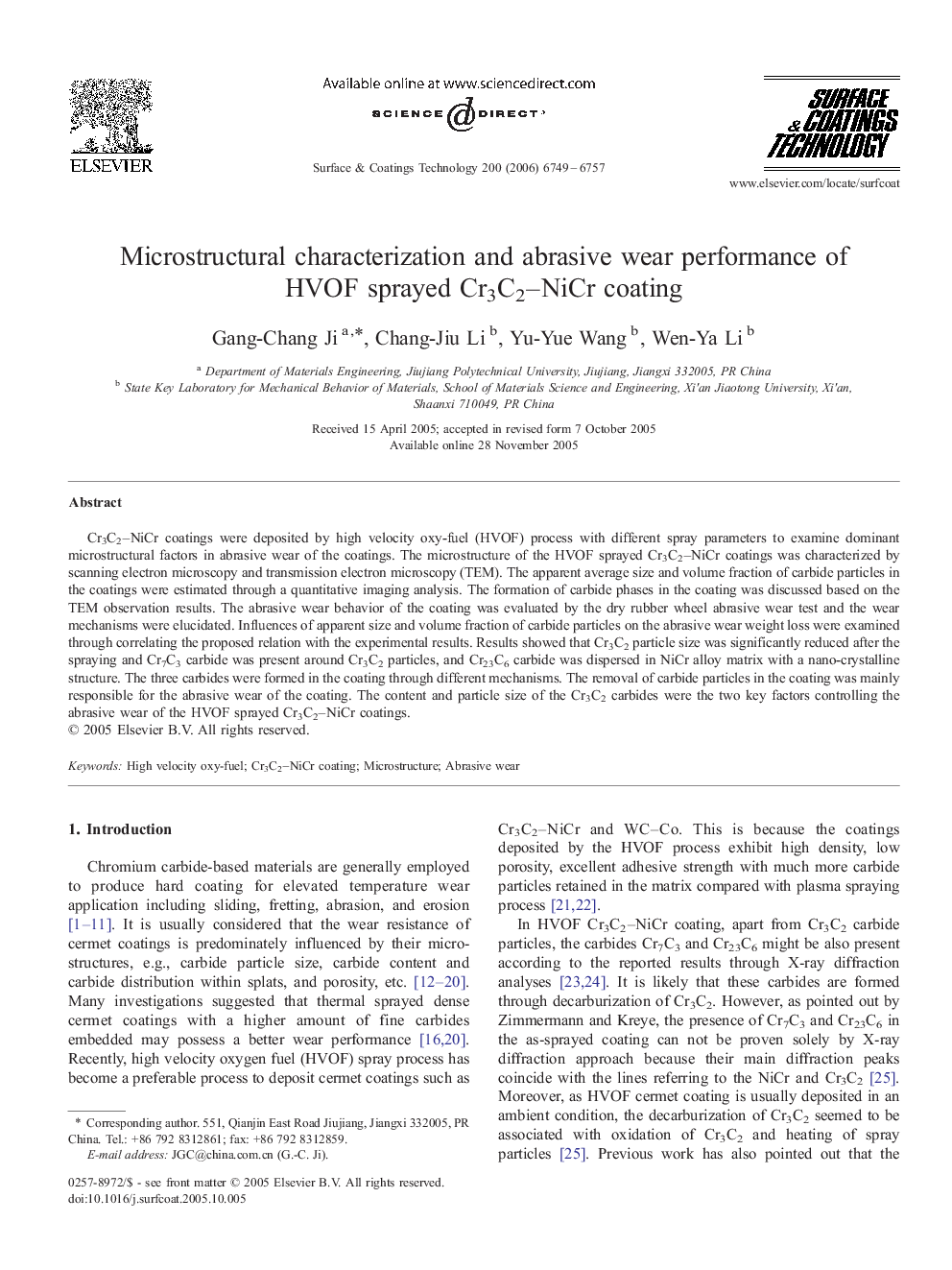| Article ID | Journal | Published Year | Pages | File Type |
|---|---|---|---|---|
| 1663141 | Surface and Coatings Technology | 2006 | 9 Pages |
Cr3C2–NiCr coatings were deposited by high velocity oxy-fuel (HVOF) process with different spray parameters to examine dominant microstructural factors in abrasive wear of the coatings. The microstructure of the HVOF sprayed Cr3C2–NiCr coatings was characterized by scanning electron microscopy and transmission electron microscopy (TEM). The apparent average size and volume fraction of carbide particles in the coatings were estimated through a quantitative imaging analysis. The formation of carbide phases in the coating was discussed based on the TEM observation results. The abrasive wear behavior of the coating was evaluated by the dry rubber wheel abrasive wear test and the wear mechanisms were elucidated. Influences of apparent size and volume fraction of carbide particles on the abrasive wear weight loss were examined through correlating the proposed relation with the experimental results. Results showed that Cr3C2 particle size was significantly reduced after the spraying and Cr7C3 carbide was present around Cr3C2 particles, and Cr23C6 carbide was dispersed in NiCr alloy matrix with a nano-crystalline structure. The three carbides were formed in the coating through different mechanisms. The removal of carbide particles in the coating was mainly responsible for the abrasive wear of the coating. The content and particle size of the Cr3C2 carbides were the two key factors controlling the abrasive wear of the HVOF sprayed Cr3C2–NiCr coatings.
